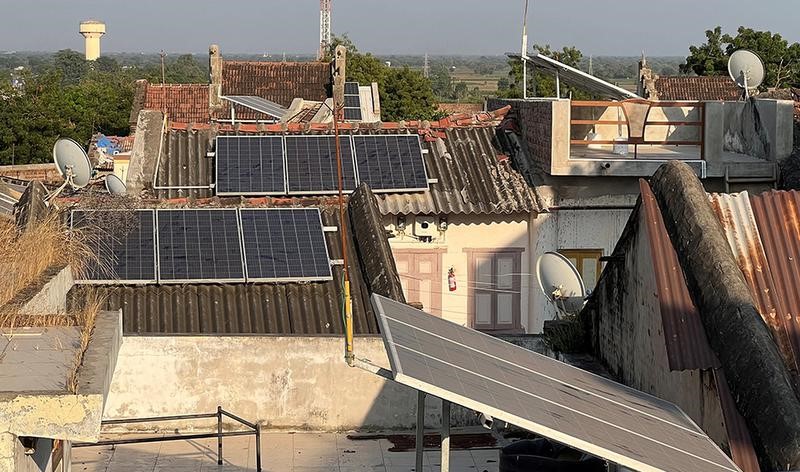Description

Disclaimer: Copyright infringement not intended.
Context
- National Mission for Cultural Mapping with the mandate to map rural India’s cultural assets has covered over one lakh villages.
Details
- The entire exercise has been carried out under the Mera Gaon Meri Dharohar(My Village My Heritage) programme of the National Mission for Cultural Mapping (NMCM).
- In this cultural asset mapping, villages have been broadly divided into seven-eight categories based on whether they are important ecologically, developmentally or scholastically, if they produce a famous textile or product, and if they are connected to some historical or mythological events such as the Independence struggle or epics like the Mahabharata.
- The Indira Gandhi National Centre for Arts (IGNCA) has undertaken the cultural asset mapping of these villages through field surveys.
- The survey documents the cultural identity of the villages by involving citizens to share what makes their village, Block or district unique.
- The survey process involves a CSC Village Level Entrepreneur (VLE) conducting meetings with locals and then uploading interesting facts about their village, its places of interest, customs and traditions, famous personalities, festivals and beliefs, art and culture, etc., on to a special application.
- The IGNCA plans to cover all the 6.5 lakh villages in the country.
Examples
- The ecological category: Bishnoi village near Jodhpur in Rajasthan, which is a case study for living in harmony with nature, and Uttarakhand’s Raini village, which is famous for the Chipko movement.
- Developmental importance: like Modhera in Gujarat, which is the first solar-powered village in India.
- Historical importance: Suketi in Himachal Pradesh, Asia’s oldest fossil park, and Pandrethan in Kashmir, the village of Shaivite mystic Lal Ded.

About the Mission
- The NMCM aims to develop a comprehensive database of art forms, artists and other resources across the country.
- The Culture Ministry had approved the mission in 2017 with a ₹469 crore budget from 2017-2018 to 2019-2020.
Vision & Mission
- To envision and address the necessity of preserving the threads of rich Indian Art and Cultural Heritage
- To Convert vast and widespread cultural canvass of India into an objective Cultural Mapping
- To Design a mechanism to fulfill the aspirations of the whole artist community of the nation
- To Preserve the rich cultural heritage of this country for future generations
- To create a strong “Cultural Vibrancy” throughout the nation
Objectives of the Mission
Under this Mission, at broad-level, there are three important objectives as follows:
- National Cultural Awareness Abhiyan: Hamari Sanskriti Hamari Pahchan Abhiyan (Our Culture Our Identity)
- Nationwide Artist Talent Hunt/Scouting Programme: Sanskritik Pratibha Khoj Abhiyan
- National Cultural Workplace: Centralised Transactional Web Portal with database and demography of cultural assets and resources including all art forms and artists.

Strengths, Weaknesses, Opportunities and Threats (SWOT)
Strengths
- Large human resources and artists practicing in various art forms and availability of a large number of expert faculties.
- Growing aptitudes in the youth to adapt and learn conventional as well as modern art forms.
- Availability of varied numbers of Gurukul based or individual centers of teaching, learning, researching, preserving and propagating various art forms.
- Availability of regional exchange grids at local level with potential for development at National/ International level.
- No country in the world has these many art forms practiced and processed in the modern times.
- Existence of a common thread in various art forms from ancient times and potential to establish well-structured relationship between various art forms from ancient time to modern era.
- Availability of various cultural art forms as a skill / creative form of expressions for generating livelihoods and means of social sustenance.
- Abundant un-nurtured talent is available.
- Strong cultural presence is a thread for sustenance of the human existence.
- Existence of employment opportunity through economic activities in various art forms, like performing arts, handicrafts, creative arts, woven arts, paintings, crafts articles, tourism, etc.
Weaknesses
- No coordinated efforts for development of these art forms and no holistic process of cultural exchange among these practitioners/ institutions.
- Lack of timely & easy availability of database of performing artists / resource persons.
- Difficulty in accessing information related to availability of various art forms resulting in gap between demand and supply of practitioners of performing arts & skills.
- Lack of collaborative learning due to questionable quality of teaching at various places.
- Lack of parameterised monitoring & tracking of art growth/lack of objectivity.
- Lack of skill development processes in the learning & encouragement of various art forms to excel.
- Non-standardised sporadic way of preserving various art forms due to insufficient & inconsistent financial infrastructure to cultivate various performing art forms.
- Substantial duplication of efforts at various levels/reinventing the wheel leading to redundancy.
- Lack of access to various performing arts available at various places/ institutions.
- Lack of contingents of motivated teachers to handle huge job of transfer of cultural knowledge from one generation to other for sustained growth and inheriting Indian culture.
- lack of centralised information/database on specific art wise artists in India.
Opportunities
- With such an ancient timeline, huge heritage and wide spread cultural canvass spread over thousands of years; this country has a deep rooted affection towards the performing arts and various other art forms.
- The art forms are spread over abundantly in all the States of the country and therefore, there is a large audience & potential participation across all age group and population distribution in urban/rural areas etc.
Threats
- A growing art forms cultural divide may soon endanger fabric of social harmony and national integrity.
- Other countries that are managing their cultural infrastructure well, might attract Indian youth resulting in loss of Indian contemporary and traditional culture.
- Cultural cultivation nourishes creative minds which ultimately help in keeping the society together with low crime rates. This process is in danger.
- India was leading the entire sub-continent with its vibrant cultural canvass but today it is lagging behind.
- Non- Alignment of efforts in all art forms might derail the social integrity.
- Insufficient resources at village level to preserve and promote arts.
- In the absence of formal cultural infrastructure, the nation might lose art form skills.
- With decline in the various art forms, crafts, other related economic activities etc., rural youths are migrating towards urban areas resulting in unmanageable pressure on urban infrastructure.
- Decline in the conventional art, crafts, skill and cultural heritage of the country is resulting in unnecessary investment on skill development for creation of alternate employment generation.
About IGNCA
- Indira Gandhi National Centre for the Arts (IGNCA), New Delhi is a premier government-funded arts organization in India.
- It is an autonomous institute under the Union Ministry of Culture.
- Indira Gandhi National Center (IGNCA) for the Arts is home to invaluable collections of artifacts, manuscripts, books, paintings, sculptures, and all that reflect the heritage of Indian culture.
|
PRACTICE QUESTION
Q) Which of the following statements with reference to cultural assets in Indian villages is/are incorrect?
a. Modhera in Gujarat is the first solar-powered village in India.
b. Pandrethan in Kashmir is Asia’s oldest fossil park.
c. Bishnoi village in Rajasthan is famous for the Chipko movement.
- a and b
- b and c
- a and c
- None of the above
Answer: Option 2
|

https://epaper.thehindu.com/ccidist-ws/th/th_delhi/issues/31682/OPS/GA1B384QF.1+GTUB38SEV.1.html












